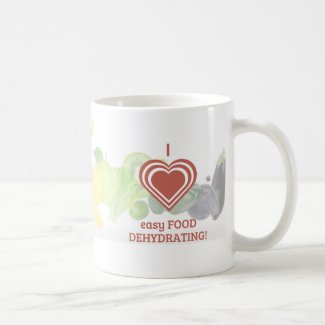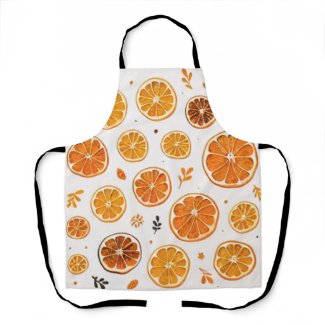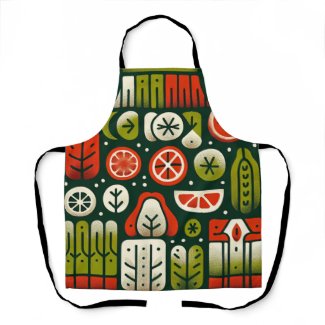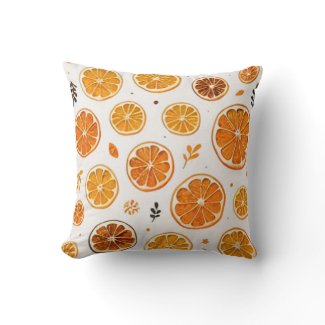- Home
- Easy Dehydrated Food Recipes
- Cauliflower Soup Recipe
Cauliflower Soup:
Warm, Wholesome, & Delicious

Susan Gast | Author and blogger at Bored Boomers, Beesville Books, A New Sober You and Easy Food Dehydrating
This super-tasty, soul-satisfying cauliflower soup is pure comfort in a bowl! With its rich, velvety texture, you’d swear it had cream in it—but nope, it’s just the magic of blended cauliflower doing its thing.
Each spoonful is smooth, nourishing, and oh-so-cozy, making it the perfect meal for chilly days or anytime you crave something warm and wholesome.

Got pent-up frustration? No problem! Take it out on the cauliflower as you chop away—instant stress relief! But if you’re using dehydrated cauliflower, you can skip the chopping and stay calm, cool, and collected while this delicious soup practically makes itself.
Either way, you’ll end up with a satisfying bowl of creamy goodness that’s both easy to make and full of flavor!

Cauliflower Soup Recipe
Rich, Thick, Smooth, and Satisfying!
As noted below in the "how to" area coming up, please remember to rinse your millet and quinoa before adding it to the mix (especially the quinoa because it has a really bitter taste if you don't rinse it first).
Ingredients
- 1/8 cup dehydrated onion
- 1/8 cup dehydrated celery
- 2 cups dehydrated cauliflower
- 2 slices dehydrated elephant garlic
- 2 cups boiling water (for the dehydrated items)
- 1/8 cup millet, optional—rinse first
- 1/8 cup quinoa, optional—rinse first
- salt* and pepper to taste
- 4 cups of vegetable stock
- 1/2 teaspoon Cumin
- 2 tablespoons fresh chopped parsley, and a sprig for garnish!
NOTE: If you wish to make this delicious soup from fresh cauliflower, you can use the entire head of it. Yes, it will just about fill up the whole pan, but it does 'cook down'! Sprinkle on some chopped parsley for a nice garnish touch!
If you prefer your soup a little thinner, at the end of cooking add half a cup of vegetable stock. But as I mentioned at the top of the page, I just love how thick and creamy this cauliflower soup is!
Also, at the bottom of this page is more information on the goodness of adding millet and quinoa to your diet.
Instructions
- Use the freshly boiled water to rehydrate the dehydrated items above.
- When they are sufficiently plump, put the veggies into a heavy saucepan (with the optional millet and quinoa—RINSE the millet and quinoa first in a fine-sieve in the sink to get rid of the bitter taste).
- Add the chopped parsley, vegetable stock, and cumin, and cook for 15-20 minutes, until the cauliflower is fully cooked/soft.
- Use a blender to mix in small batches... allow the air to escape from the little hole in the lid so that the heat doesn't cause any explosive problems! Just have your hand over that top little hole to catch any runaway splashes.
- Blend until smooth, about 45 - 60 seconds. Serve with an added sprig of parsley for garnish!
*IF you need to add salt, do so, BUT be careful NOT to over-salt as the bouillon has salt in it.
Nutrition Information
- Servings: 6 servings
- Calories: 83kcals
- Fat: 0.9g
- Protein: 3.9g
- Carbohydrates: 16.5g

Want to Use Fresh Ingredients?
If you want to use fresh ingredients that you may have on hand, do this:
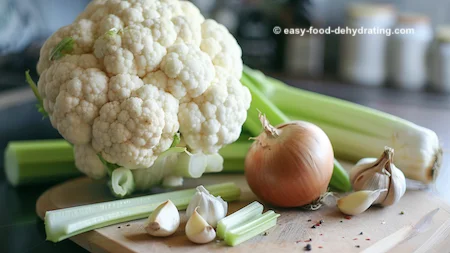
Exchange the dry ingredients in the recipe, above, for these fresh ingredients listed below!
- 3/4 to a whole head of cauliflower - remove outer leaves and break down into florets - wash if needed
- 1/4 large onion, peeled and diced
- 1 celery stalk, sliced
- 2 slices fresh elephant garlic, or 1 small clove of "regular sized" garlic

Why ARE There Different Colored Cauliflowers?
The color of cauliflower comes from natural plant pigments. Purple cauliflower gets its vibrant hue from anthocyanins, the same antioxidants found in blueberries and eggplant.
Orange cauliflower owes its color to carotenoids, the same pigments that give carrots and sweet potatoes their bright orange shade.
White cauliflower, on the other hand, lacks these pigments, which is why it remains its classic pale color!
How to Grow Cauliflower: Essential Tips for Success
Want to grow delicious, homegrown cauliflower? Follow these key steps to ensure a healthy and bountiful harvest:
- Pick the Right Variety: Choose an early-maturing type suited for your climate, such as Snow Crown, Candid Charm, Graffiti, or White Sails.
- Start Indoors: Begin seeds 6-8 weeks before the last spring frost. Once seedlings develop 3-4 true leaves, transplant them outdoors about 1-2 weeks after the last frost.
- Optimal Growing Conditions: Cauliflower thrives in full sun (6+ hours per day) and nutrient-rich, well-draining soil with a pH between 6.0 - 7.5. Boost soil quality by mixing in compost or fertilizer before planting.
- Spacing & Planting: Space plants 18-24 inches apart in rows 2-3 feet apart. Transplant seedlings at the same depth they grew in their starter pots.
- Consistent Watering: Keep the soil evenly moist by providing 1-2 inches of water per week. Inconsistent watering can lead to small, bitter heads.
- Blanching for White Heads: When heads start forming, tie outer leaves over them to protect against sunlight and prevent discoloration.
- Boost with Fertilizer: Apply a nitrogen-rich fertilizer when heads begin developing to encourage strong growth.
- Harvesting: Once heads are fully formed and compact, cut them along with a few leaves to help preserve freshness.
- Ideal Growing Temperatures: Though cauliflower is cold-hardy, it grows best in temperatures between 60-70°F. Plan plantings so they mature in cooler fall weather for the best results.
With the right timing, care, and attention, you can successfully grow flavorful, homegrown cauliflower in your garden! 🌱
Here are the best cauliflower-growing regions in the US:
- California
- Arizona
- Oregon
- New York
- Washington
- Texas
How to Make EASY MEALS with Dried Food
20 Taste-Tested Easy Recipes
Containing dehydrated food... that even your kids and spouse will eat!
🍕 Pizza! 🥧 Shepherd's Pie! 🥘 Beef Stew!
plus Cauliflower Soup and Cauliflower Mash, along with crazy Carrot Soup!
Decadent Desserts:
Carrot Cake and Cranberry Pineapple Pie!
and more...
Fresh food ingredient amounts are included for when you have fresh food on hand.
See which recipes are included here.
Is Millet Good for You? Absolutely! Here's Why:
Millet is a highly nutritious, gluten-free grain that offers several health benefits:
- Packed with Nutrients – Millet is rich in protein, fiber, antioxidants, magnesium, phosphorus, and other essential minerals, making it a powerhouse for overall wellness.
- Easy to Digest – As an alkalizing and non-acidic grain, millet is gentle on the stomach and one of the least allergenic grains, making it easier to digest than many other options.
- Supports Gut Health – Millet contains prebiotic carbohydrates that nourish beneficial gut bacteria, promoting better digestion and overall gut balance.
- Naturally Gluten-Free – A perfect alternative for those with Celiac disease or gluten intolerance, millet provides a safe, nutrient-dense substitute for wheat and other gluten-containing grains.
With its versatility, digestibility, and impressive nutrient profile, millet is a fantastic addition to a healthy diet!
Is Quinoa Good for You? The Answer Might Surprise You!
Quinoa is an exceptionally nutritious grain alternative packed with benefits:
- Complete Protein Powerhouse – Unlike most plant-based foods, quinoa contains all nine essential amino acids, making it a complete protein. With about 4 grams of protein per 1/4 cup (uncooked), it’s an excellent choice for vegetarians and vegans.
- High in Fiber – With 5 grams of fiber per 1/4 cup, quinoa supports healthy digestion, promotes fullness, and helps maintain balanced blood sugar levels.
- Steady Energy Source – As a complex carbohydrate, quinoa digests slowly, providing a long-lasting energy boost without sugar crashes.
- Iron-Rich – Quinoa contains significantly more iron than most grains, helping transport oxygen throughout the body and reduce the risk of anemia.
- Loaded with Antioxidants – It’s packed with quercetin, kaempferol, and ferulic acid, powerful antioxidants that combat free radicals and help reduce inflammation.
- Diabetes-Friendly – With a low glycemic index of 53, quinoa won’t cause sharp blood sugar spikes, making it a smart choice for those managing diabetes.
- Naturally Gluten-Free – A safe and nutritious option for anyone with Celiac disease or gluten sensitivity.
- Versatile & Delicious – Its mild, nutty flavor makes quinoa perfect for both sweet and savory dishes, from breakfast porridge to hearty grain bowls.
With its high protein, fiber, and essential nutrients, quinoa is a superfood worth adding to your diet!
Thanks for stopping by today to check out my cauliflower soup recipe!
Get Your Free Guide to Dehydrating Like a Pro!
Don't forget to grab your free Six Simple Steps eBook! It’s packed with tips for dehydrating everything from fruits and veggies to dog treats. Get it here.
Before You Go...
If you like the content, please give me some love by clicking on the 🩷 in the lower right hand corner (on just about all my pages). This signals to me that you find it enjoyable and useful. Thank you so much!









